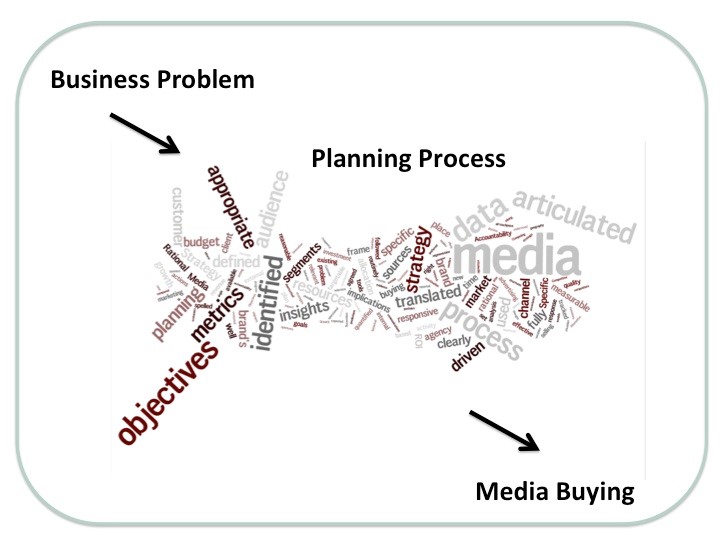Watch the Gap!

If you've been following the news about the business of media in advertising over the past several years, you've surely noticed an increasing and almost obsessive interest in the media buying part of the equation. This breathless reporting runs the gamut from billing transparency issues to digital programmatic auction practices, to bot fraud, to ad tech stacks, to blockchain potential and on and on. Not that a focus on buying is out of order. After all, the driving principle that birthed the big media agencies 20 years ago was at heart a consolidation of resources to achieve critical mass in buying in the media marketplace. And not incidentally, this move by the agency holding companies was very easy to explain to the investment community. It was a familiar idea, and much less complicated than the intricacies of media strategy planning. Then, a bit later, clients brought their procurement folks into the mix -- and procurement is naturally looking for objective numerical evidence, accessible within short time frames, to benchmark agency performance. That evidence is readily found in media buying. In planning, its not so easy. So media buying audits are a standard part of the media business landscape.
More recently there is also increasing focus on the upstream issues of business goal setting and marketing strategy development, issues discussed in the C suites of major advertisers and often facilitated by the big management consultancies. The aim of all this activity and focus is the natural desire on the part of advertisers to restore brand growth and improve return on investment, particularly their media investments which are generally their biggest selling expense. But in this drive for ROI improvement, there's a big piece that's being neglected.
The Planning Gap

The missing piece is a focus on the planning process that translates the imperatives of the client's defined business problem into concrete media objectives and strategies that form the directives for media buying. The crucial and continuing importance of this piece of the puzzle has been well articulated by my colleague Steve Fajen in his recent article on MediaVillage titled "Squeeze More Savings or Make More Money." Media planning is crucial to ROI because at its best it:
- Specifically identifies sources of revenue growth
- Requires collaboration of marketing, media and creative
- Identifies required data resources and systems to develop key market insights
- Identifies and prioritizes target segments
- Incorporates a rational, data-driven channel planning process
- Creates an integrated and reasoned allocation of funding for traditional and digital media
- Sets desired target segment behaviors that will drive revenue and profit
- Establishes measurable accountability metrics and timeframes
- Provides the framework for effective media buying
And yet the focus is elsewhere.
Where's the Planning Audit?
As an industry, we need to take a much closer look at this part of the ROI equation and find ways to audit the process and resources used for media planning that are flexible and relevant to each individual brand's needs and situation, but held accountable to modern standards of planning practice. We believe it is essential for every advertiser and every agency to make an assessment of their media planning process and get this gap closed now.
Click the social buttons above or below to share this story with your friends and colleagues.
The opinions and points of view expressed in this content are exclusively the views of the author and/or subject(s) and do not necessarily represent the views of MediaVillage.com/MyersBizNet, Inc. management or associated writers.


